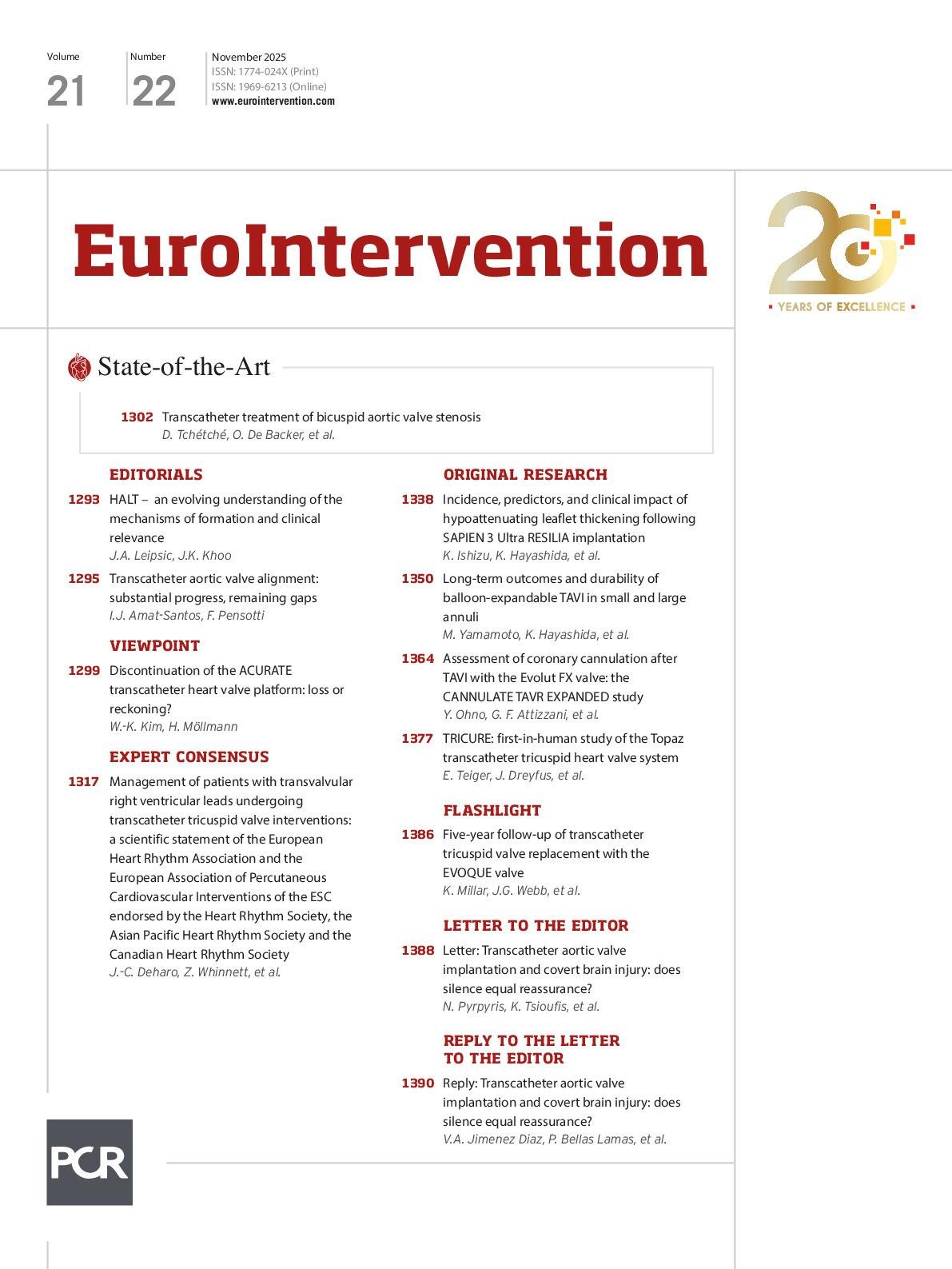Abstract
Background: The latest-generation SAPIEN 3 Ultra RESILIA (S3UR) transcatheter heart valve (THV) incorporates several changes in leaflet design, including an improved anticalcification coating and modified commissural attachment. There are no established data on hypoattenuating leaflet thickening (HALT) following transcatheter aortic valve implantation (TAVI) using the S3UR.
Aims: Our study aimed to elucidate the clinical features of HALT following S3UR implantation.
Methods: As a subset of the OCEAN (Optimized CathEter vAlvular INtervention)-TAVI registry, we prospectively assessed patients who underwent cardiac computed tomography (CT) 30 days after S3UR implantation. HALT and potentially relevant THV geometry were analysed using four-dimensional CT data by an independent core laboratory.
Results: Of the 445 patients studied, HALT was detected in 95 patients (21.3%) 30 days after TAVI. The modification of the commissural attachment specific to the 20 mm and 23 mm S3UR THVs did not affect the incidence of HALT (22.1% for ≤23 mm; 20.2% for ≥26 mm; p=0.636). The hourglass-shaped THV frame (p<0.001) and asymmetricity of THV leaflets (p=0.002) were independently associated with HALT development. A trend toward higher mean aortic gradients at 30 days with greater degrees of HALT (HALT >25% vs HALT ≤25%: 10.3 [interquartile range [IQR] 7.0-13.0] mmHg vs 8.6 [IQR 6.3-11.6] mmHg; p=0.007; HALT >50% vs HALT ≤50%: 11.5 [IQR 7.0-14.3] mmHg vs 8.9 [IQR 6.3-11.9] mmHg; p=0.002) was noted.
Conclusions: The incidence of HALT for the S3UR was comparable with the already reported incidences for the previous-generation SAPIEN 3 THV. Given the haemodynamic impact of HALT severity and multiplicity, strategic planning to avoid deformation of the implanted THV might be required. (Clinical trial registration: UMIN000020423)
Sign up for free!
Join us for free and access thousands of articles from EuroIntervention, as well as presentations, videos, cases from PCRonline.com

